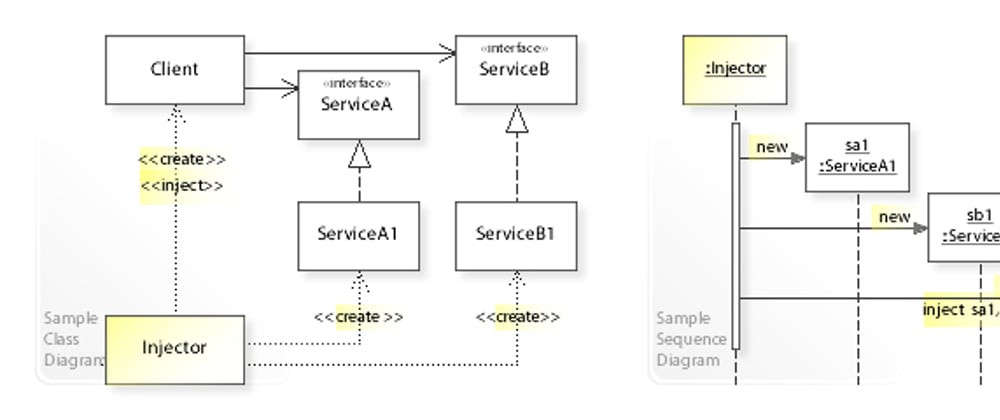There are a lot of dependency injection framework in the open source swift world with really cool features like object graph, persistence etc. But what if all you need is a lightweight dependencies container? In this post I will show you how to create it by leveraging the Metatype Type, Generics, the Hashable protocol and the Equatable protocol.
The open source Swift world is full of useful framework. You can find almost everything you need (there are rare cases where you need to write something that still doesn't exist out there). Anyway, a lot of the frameworks and libraries you will find out do more than you need. See for example the world of the dependencies injection framework. We have a lot of alternatives from which we can choose: Swinject, Weaver etc. This frameworks come with a lot of features like: object graph construction, injection with property wrappers, instance persistence etc. This are all useful feature, but if your needs are very limited (just a dependecies container register/resolver using protocol and classes) the previous frameworks gives you just a big overhead and complexity on you code. This is why for my recent project I tried to write my own very simple dependencies injector container by leveraging the power of Swift Metatype and the Hashable protocol. Let's go and see the how I created it 😏.
Implementation
The main class of dependencies injector container is composed by 2 classes: DependeciesContainer and DependencyKey.
The main one stores in the field dependecies a dictionary of all the dependencies registered using an instance of the second one. DependeciesContainer exposes two methods:
register<T>(type: T.Type, name: String? = nil, service: Any), that lets you register a new dependency in the container. It accepts 3 parameter. The first one is theTypeof the dependency. The second one is a string that let's you identify different named variations of the same dependencies (e.g. you registerCatandDog, two different implementation of an hypotheticalAnimalprotocol). The third one is the instance saved in thedependeciesdictionary.resolve<T>(type: T.Type, name: String? = nil) -> T?, that lets you get an instance previously registered. This method accept the same first two parameter of the previous method. It will return null if none of the registered instance has a combination oftypeandnameas the one received as parameters.
As you can see both method extensively uses generics in order to be able to accept any possible class or protocol you may want to use. This is the implementation of DependeciesContainer.
class DependeciesContainer {
static let shared = DependeciesContainer()
private init() {}
private var dependecies: [DependencyKey : Any] = [:]
func register<T>(type: T.Type, name: String? = nil, service: Any) {
let dependencyKey = DependencyKey(type: type, name: name)
dependecies[dependencyKey] = service
}
func resolve<T>(type: T.Type, name: String? = nil) -> T? {
let dependencyKey = DependencyKey(type: type, name: name)
return dependecies[dependencyKey] as? T
}
}
Now, you can ask some question after seeing this code. First of all, what is a Type? Apple defines it as:
A metatype type refers to the type of any type, including class types, structure types, enumeration types, and protocol types.
A metatype is the representation of the type of an instance. It allows you to use all of class properties and methods of a type. It allows also to threat your code as a data. In this specific case we are using the Type metatype to identify an instance from its own description.
The second one question that you could ask is: how can you use the DependecyKey class instances as key in your dependecies dictionary? This is possible thanks to the Hashable and Equatable protocols. This class implements the hash(into hasher: inout Hasher) method of the Hashable protocol by using the combination of type and name received from the DependeciesContainer. In that method I'm putting in the same hasher the type and the name. In particular for the first one I'm extracting a unique identifier using the ObjectIdentifier function from the Swift Reflection package.
It also implements the Equatable protocol using the same fields in the static func == (lhs: DependencyKey, rhs: DependencyKey) -> Bool method. By implementing this two protocol a class could be used as key in a dictionary.
class DependencyKey: Hashable, Equatable {
private let type: Any.Type
private let name: String?
init(type: Any.Type, name: String? = nil) {
self.type = type
self.name = name
}
func hash(into hasher: inout Hasher) {
hasher.combine(ObjectIdentifier(type))
hasher.combine(name)
}
static func == (lhs: DependencyKey, rhs: DependencyKey) -> Bool {
return lhs.type == rhs.type && lhs.name == rhs.name
}
}
This is all I need for my ultra light dependencies injector 😍!!! Let's see it in action in an example.
protocol Animal {
func isAlive() -> Bool
}
class Cat: Animal {
func isAlive() -> Bool {
true
}
func miaow() -> String {
return "miaow"
}
}
class Dog: Animal {
func isAlive() -> Bool {
true
}
func bark() -> String {
return "wooof"
}
}
class Tiger: Animal {
func isAlive() -> Bool {
true
}
func roar() -> String {
return "roar"
}
}
protocol Person {
func breath() -> String
}
class SickPerson: Person {
func breath() -> String {
return "fiuu"
}
func cough() -> String {
return "cough"
}
}
let dc = DependeciesContainer.shared
// Register using class `Type` Dog
dc.register(type: Dog.self, service: Dog())
let dog = dc.resolve(type: Dog.self)!
print(String(describing: dog)) // "__lldb_expr_7.Dog\n"
print(dog.bark()) // "wooof\n"
// Register using protocol `Type` Person
dc.register(type: Person.self, service: SickPerson())
let person = dc.resolve(type: Person.self)!
print(String(describing: person)) // "__lldb_expr_7.SickPerson\n"
print(person.breath()) // "fiuu\n"
print((person as! SickPerson).cough()) // "cough\n"
// Register using protocol `Type` Animal and variations
dc.register(type: Animal.self, name: "Cat", service: Cat())
dc.register(type: Animal.self, name: "Tiger", service: Tiger())
let cat = dc.resolve(type: Animal.self, name: "Cat")!
print(String(describing: cat)) // "__lldb_expr_9.Cat\n"
print(cat.isAlive())
print((cat as! Cat).miaow()) //"miaow\n"
let tiger = dc.resolve(type: Animal.self, name: "Tiger")!
print(String(describing: tiger)) // "__lldb_expr_9.Tiger\n"
print(tiger.isAlive())
print((tiger as! Tiger).roar()) // "roar\n"
Conclusion
You can find all the code shown in this post in this Github repo. Remember: sometimes with a couple of classes you can avoid to import big frameworks and library into your projects. You just need to study hard the languages and SDK fundamental. 💗
Originally published at https://www.fabrizioduroni.it on March 6, 2020.







Latest comments (0)